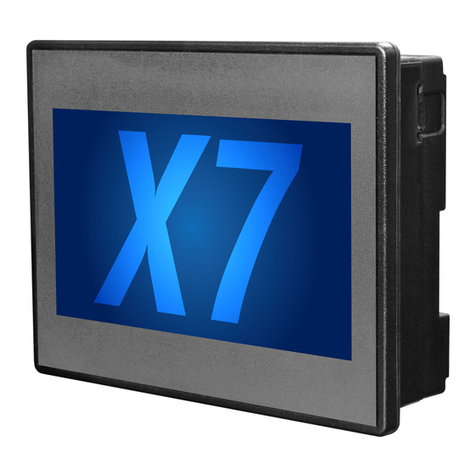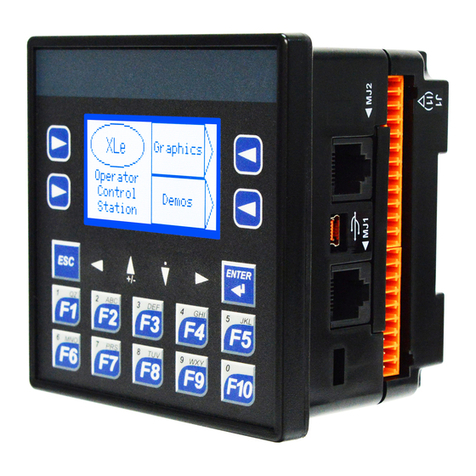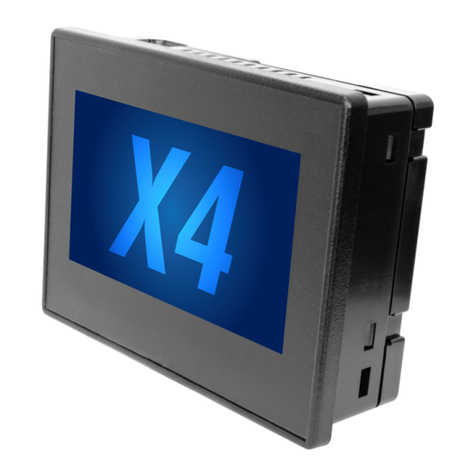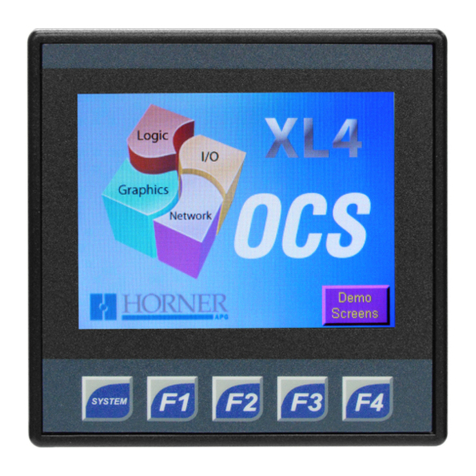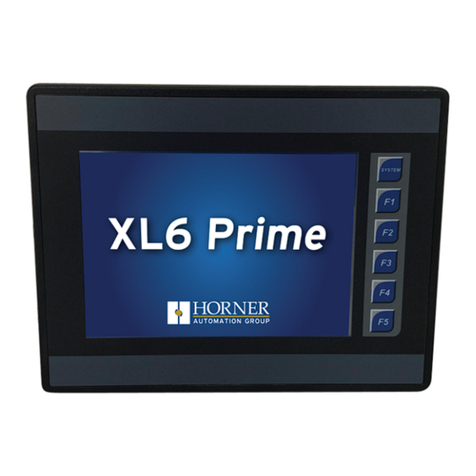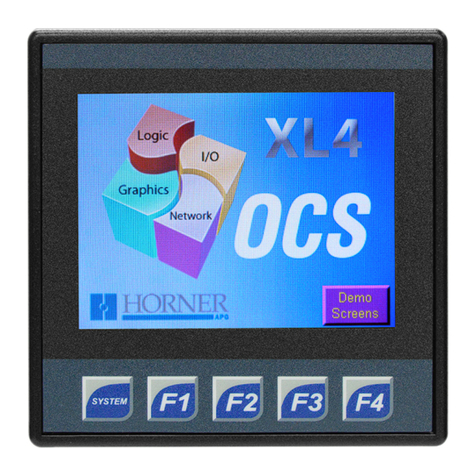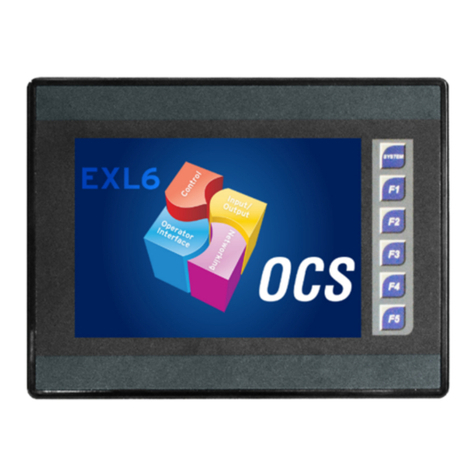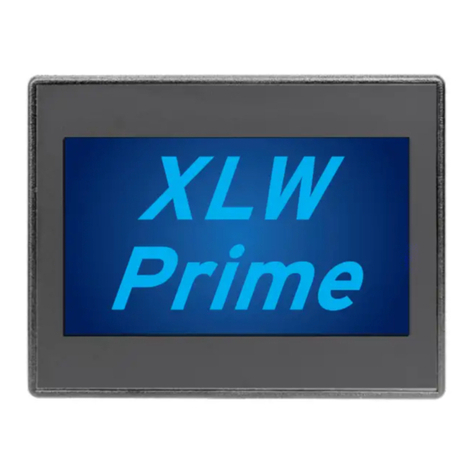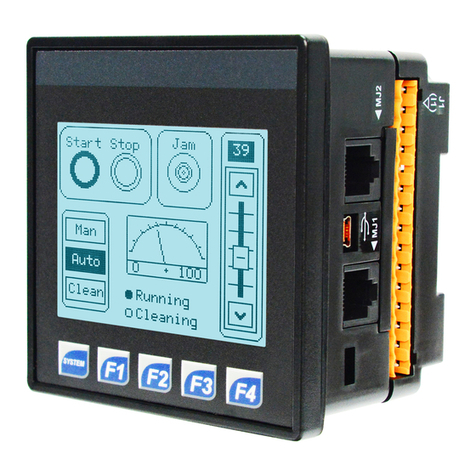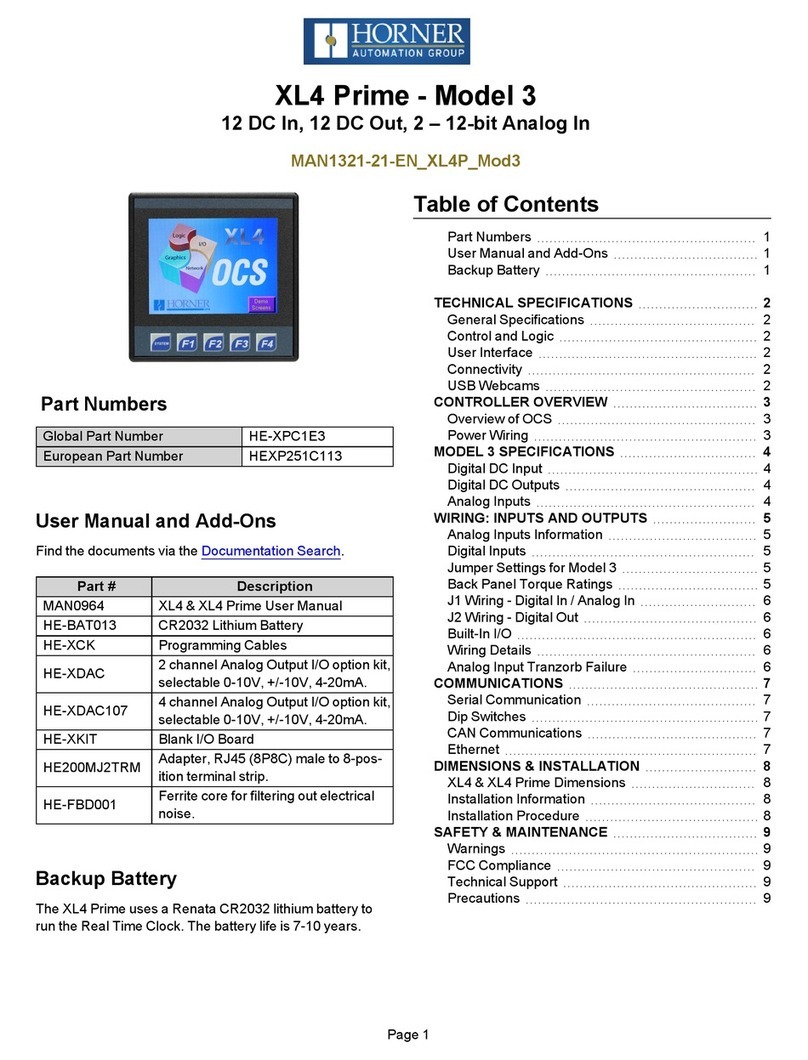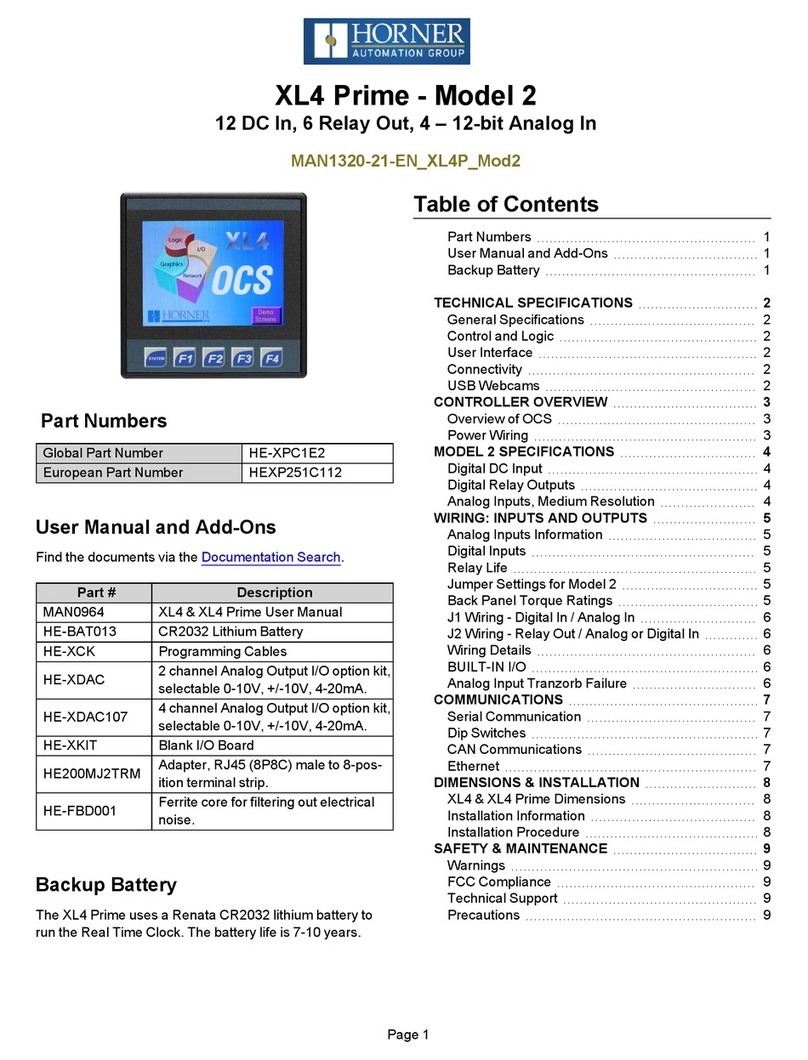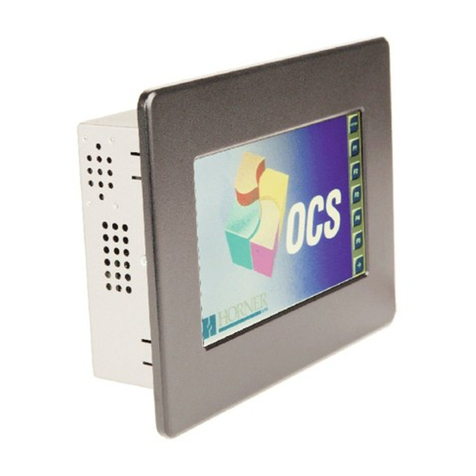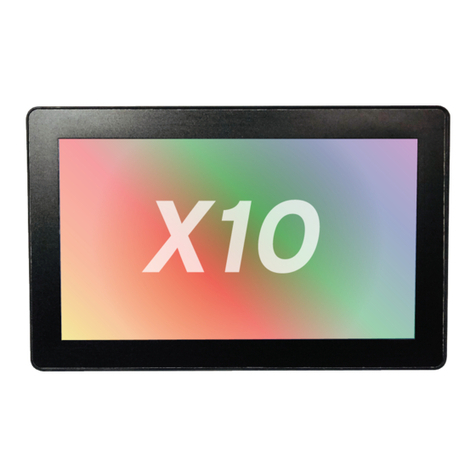
5/10/22 | MAN1116-08-EN
Indianapolis, USA | Cork, Ireland | Calgary, Canada | Bangalore, India | Oakleigh, Australia | Tianjin, China | Esteio, Brazil
Please visit our website for a complete listing and to learn more about certified Horner Automation products.
This document is the property of Horner Automation Group, and is subject to change.
page 2 of 7
1.8 Digital DC Outputs
Outputs per Module 12 Including 2 Configurable PWM Out-
puts and 1 Stepper
Commons per Module 1
Output Type Sourcing / 10kΩPull-Down
Absolute Max. Voltage 28VDC Max
Output Frequency 10kHz or 65kHz with HE-XHSQ
Output Protection Short Circuit
Max. Output Current per Point 0.5A
Max. Total Current 4A Continuous
Max. Output Supply Voltage 30VDC
Min. Output Supply Voltage 10VDC
Max. Voltage Drop at Rated
Current 0.25VDC
Max. Inrush Current 650mA per Channel
Min. Load None
OFF to ON Response 1ms
ON to OFF Response 1ms
Output Characteristics Current Sourcing (Pos. Logic)
PWM Out ≈ 10kHz
Rise Time 50 - 115μs
Fall Time 8 - 20μs
Analog Inputs, High Resolution
Number of Channels 2
Input Ranges (Selectable)
0-10VDC; 0-20mA; 4-20mA;
100mV; RTD: PT100; and
J, K, N, T, E, R, S, B Thermocouples
Safe Input Voltage Range
10VDC: -0.5V to +15V
20mA: -0.5V to +6V
RTD / T/ C: +/- 24VDC
Nominal Resolution 10V, 20mA, 100mV: 14 Bits
RTD, Thermocouple: 16 Bits
Input Impedance
(Clamped @ -0.5VDC to 12VDC)
Current Mode:
100Ω, 35mA Max. Continuous
Voltage Mode:
500kΩ, 25mA Max. Continuous
%AI Full Scale
10V, 20mA, 100mV:
32,000 counts full scale
RTD / T/C: 20 Counts / ˚C
Max. Over-Current 35mA
Open Thermocouple Detec Current 50nA
Analog Inputs, High Resolution Continued
Thermocouple:
B / R / S
E
T
J
K / N
Temperature Range:
32˚F to 2,912˚F (0˚C to 1,600˚C)
-328˚F to 1,652˚F (-200˚C to 900˚C)
-400˚F to 752˚F (-240˚C to 400˚C)
-346˚F to 1,382˚F (-210˚C to 750˚C)
-400˚F to 2,498˚F (-240˚C to 1, 370˚C)
Thermocouple Common Mode Range +/- 10V
Converter Type Delta Sigma
Max. Error at 25˚C
(*excluding zero)
*4-20mA +/- 0.10% of full scale
*0-20mA +/- 0.10% of full scale
*0-10VDC +/- 0.10% of full scale
RTD (PT100) +/- 1.0°C of full scale
0-100mV +/- 0.05% of full scale
Max. Thermocouple Error
(After Warm up Time of One Hour)
+/-0.2% (+/-0.3% below -100°C)
of full scale
Conversion Speed,
Both Channels Converted
10V, 20mA, 100mV: 30 Times/Second
RTD Thermocouple: 7.5 Times/Second
Conversion Time per Channel 10V, 20mA, 100mV: 16.7ms
RTD, Thermocouple: 66.7ms
RTD Excitation Current 250µA
1.9 Analog Inputs, High Resolution
1.7 Digital DC Inputs
Inputs per Module 12 Including 4 Configurable HSC Inputs
Commons per Module 1
Input Voltage Range 12VDC / 24VDC
Absolute Max. Voltage 30VDC Max.
Input Impedance 10kΩ
Input Current:Positive Logic: Negative Logic:
Upper Threshold
Lower Threshold
0.8mA
0.3mA
-1.6mA
-2.1mA
Max. Upper Threshold 8VDC
Min. Lower Threshold 3VDC
OFF to ON Response 1ms
ON to OFF Response 1ms
High Speed Counter
Max Freq* 500kHz .
*See I/O info below for detail regarding HSC and PWM
technical specifications continued...
Analog Inputs
Number of Channels 2
Output Ranges 0-10VDC
0-20mA
Nominal Resolution 12 Bits
Update Rate Once per PLC scan
Max. Error at 25°C
(Excluding Zero)
0-20mA 0.1% of full scale
0-10V 0.1% of full scale
Analog Inputs
Minimum 10V Load 1kΩ
Minimum Resistance Load 500Ω
Analog Outputs;
Output Points Required 2
Additional Error for Temp. Other
than 25°C
20mA 0.000143%/C°
0-10V 0.000151%/C°
1.10 Analog Outputs
